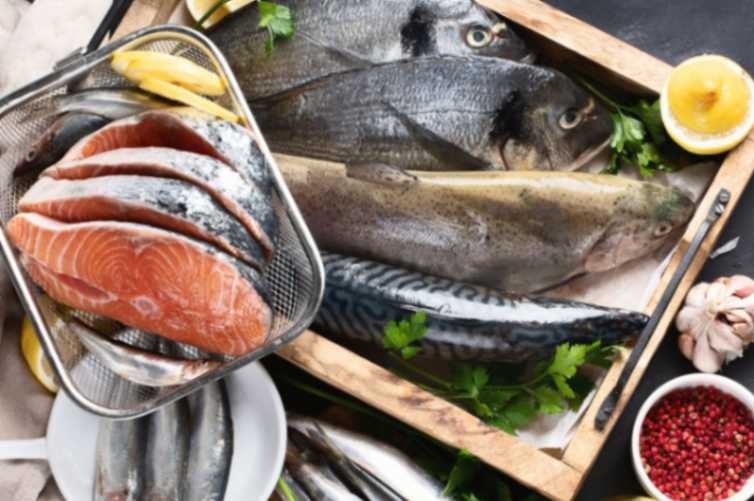Your heart is the muscle that ensures efficient blood flow to the rest of your body, including your all-important brain. Your body needs oxygen to help it function, and your blood is charged with delivering that oxygen to the various areas of your body—and your heart is the organ pumping every moment of the day and night in order to make those oxygen deliveries on time.
Article at a Glance:
The Human Heart
- Delivers oxygen via blood throughout the body
- Your heart is a strong muscle, but it craves nutritional support
Fats Are Essential
- While saturated fats and trans are detrimental to health, polyunsaturated and monounsaturated fats are essential
- Omega-3 fatty acids are polyunsaturated fats
- EPA and DHA are the most essential fatty acids
The Cardiovascular Benefits of Omega-3 Fatty Acids
- Your body can’t make Omega-3 on its own – it must come from diet
- The World Health Organization recommends 1 to 2 servings of fish per week
- Fish oil supplementation is also recommended in some situations
Krill Oil Delivers Omega-3s and More
- Along with EPA and DHA, krill oil contains the powerful antioxidant astaxanthin
- Antioxidants help deliver mitochondrial energy to your heart
- Krill oil also has a higher rate of bioavailability than fish oil
Natural Sources of Omega-3 Fatty Acids
- Certain fish and seafood have higher levels of EPA and DHA than others
Even though your heart is incredibly strong, it does require you to take part in its protection. This means making sure the foods you eat are not only packed with vital nutrients, but also not overloaded with elements seemingly designed to inflict cardiovascular damage. It’s a delicate balance—but it’s your responsibility as the owner of one lone heart.
One of the best actions you can take to keep your heart healthy is to ingest a certain amount of fat—yes, that’s right, fat. That might sound counterintuitive, but fats are a many-splendored thing.
A Lesson In Fats
If you asked a random group of people on the street whether fats were good or bad for them, the majority would answer with an emphatic “bad!” But if someone in that group was even partly familiar with Omega-3 fatty acids, they would stop and say, “well, hang on a second…”
In truth, there are four kinds of fats found in the foods we eat. Omega-3 fatty acids are a type of polyunsaturated fat—which we need to build cells and to perform a variety of functions. These fats stand in stark contrast to saturated fats and trans fats.
Saturated fats are found mostly in butter, cheese, and the fattier cuts of beef, pork, lamb, and dark poultry meat and skin. These are the fats where “everything in moderation” is key. Your body does need some saturated fats, but there is a fine line between just enough and way too much.
Trans fats, on the other hand, are bad fats that are created by food processing and are found in partially hydrogenated oils. These are the fats that are crammed into fried fast foods, bakery products with vegetable shortening, potato chips, frozen pizzas, and more. If you see “trans fats” in the nutrition facts box, put down the food and back away quickly.
In order to keep your LDL cholesterol under control and reduce your risk of certain cardiovascular conditions, the American Heart Association recommends limiting your daily intake of saturated fat and trans fat to 5 or 6 percent combined.
Polyunsaturated and monounsaturated fats, on the other hand, are considered healthy fats and even offer robust benefits to your health when eaten in moderation in place of those saturated and trans fats. And while monounsaturated fats have their place, polyunsaturated fats seem to have garnered much of the positive attention of heart-forward care providers. But why is that? Why are polyunsaturated fats good for your heart and where can you find them?
Omega-3 Fatty Acids: The Polyunsaturated Fat Advantage In Fish Oil
Leaning decidedly on the side of the good are Omega-3 Fatty Acids. Called “essential fats,” Omega-3s are polyunsaturated fats found in oily ocean dwellers like albacore tuna, salmon, herring, anchovies, sardines, swordfish, mackerel, mussels, and more—it’s the fish oil you’ve heard so much about. Unlike other types of fats, Omega-3s cannot be made by the body, meaning that they must be absorbed from a diet rich in this essential fat.
And since your body doesn’t produce its own Omega-3s, the World Health Organization recommends that you get 1 to 2 servings of fish per week—a serving size that is equivalent to 200 to 500 mg of eicosapentaenoic (EPA) and docosahexaenoic (DHA) acid, the two main types of Omega-3 fatty acids in certain fish. This also lines up with the U.S. Department of Agriculture and the U.S. Department of Health and Human Services’ Dietary Guidelines for Americans 2010.
While we’ve spoken about EPA and DHA before, a quick refresher can’t hurt. EPA and DHA, the technical terms for fatty acids, are long-chain Omega-3s that studies show could potentially ease your risk of cardiovascular disease by helping to prevent blood clots and blood vessel inflammation. But what if you simply can’t get the recommended dosage of EPA and DHA through natural sources or you’re trying to avoid the mercury often found in fish?
And since your body doesn’t produce its own Omega-3s, the World Health Organization recommends that you get 1 to 2 servings of fish per week
For those cases, supplementation might be the way to go. And that’s not necessarily a negative, as a clinical trial that followed more than 5,000 heart attack survivors found that those who took 1,000 mg of Omega-3 fatty acids a day for seven years saw a 15 percent decrease in the occurrence of a second heart attack. Meanwhile, the American Heart Association actually recommends that anyone with elevated triglycerides should consume between 2,000 and 4,000 mg of combined EPA and DHA every day—and the best way to consume that much Omega-3 is through supplementation.
Krill Oil: A Supercharged Version Of Fish Oil?
Fish oil isn’t the only seafaring source of Omega-3 fatty acids. Sharing many of the same benefits of fish oil, with a few added advantages of its own, krill oil is derived from tiny crustaceans found throughout the world’s oceans. Along with the heart-healthy anti-inflammatory benefits of EPA and DHA, krill oil naturally contains the powerful antioxidant known as astaxanthin. This nutrient, which gives krill oil its crimson hue and is the product of the crustaceans’ diet of microalgae, delivers the mitochondrial energy your heart needs to contract with more power and efficiency.
What also gives krill oil a fin up on fish oil is its higher rate of bioavailability. According to research, the ability of EPA and DHA in krill oil to bond to phospholipids rather than fat-forming triglycerides make the fatty acids more easily absorbable in your body. Those phospholipids actually help the Omega-3s penetrate your cells so that they—and astaxanthin—can get to work supporting your cardiovascular health with their antioxidant and anti-inflammatory properties.
Natural Sources Of Omega-3 Fatty Acids
Putting krill oil aside for a moment, fatty, oily fish is an excellent source of DHA and EPA Omega-3 fatty acids. The problem is, there are plenty of fish in the sea—so which fish should you reel into your everyday diet when considering a serving size of 3 ounces?
- Salmon: If restaurant menus and grocery store displays are any indication, salmon, both wild caught and farmed, are incredibly popular. But more than boasting a unique, desirable flavor, salmon is one of the most nutritious fish on the market. A serving of wild-caught salmon contains 1.22 g of DHA and 0.35 g of EPA, whole farmed salmon contains 1.24 of DHA and 0.59 g of EPA. Salmon is also well-regarded for its other nutritional properties, including protein, magnesium, potassium, selenium, and B vitamins.
- Mackerel: Taste-wise, mackerel is considered a tad milder than salmon, but this pale-hued fish still packs a strong Omega-3 punch. A serving of mackerel contains 0.59 g of DHA and 0.43 g of EPA and is also rich in selenium and vitamin B12.
- Oysters: Classically thought of as an aphrodisiac, the humble oyster’s best quality is in fact its robust levels of Omega-3s. Oysters contain 0.23 g of DHA and 0.30 g of EPA, with additional pearls of zinc and vitamin B12 included as well.
- Sardines: Packed into cans and usually drowning in oil, sardines also pack in the fatty acids, with 0.74 g of DHA and 0.45 of EPA. Sardines are also a good source of selenium, along with vitamins B12 and D.
- Trout: Rainbow trout swims in as a great option for anyone looking to increase their intake of Omega-3s with a fish that also happens to be low mercury. It’s also not as over-fished as salmon has become. One serving of trout contains 0.44 g of DHA and 0.40 g of EPA, along with protein, potassium, and vitamin D.
Omega-3 Fatty Acids Won’t Break Your Heart
Anyone who has ever experienced a cardiovascular condition knows just how fragile our body’s strongest muscle can be. Your heart needs your support—give it the nutrition it needs, starting with the net gains of Omega-3 fatty acids.









